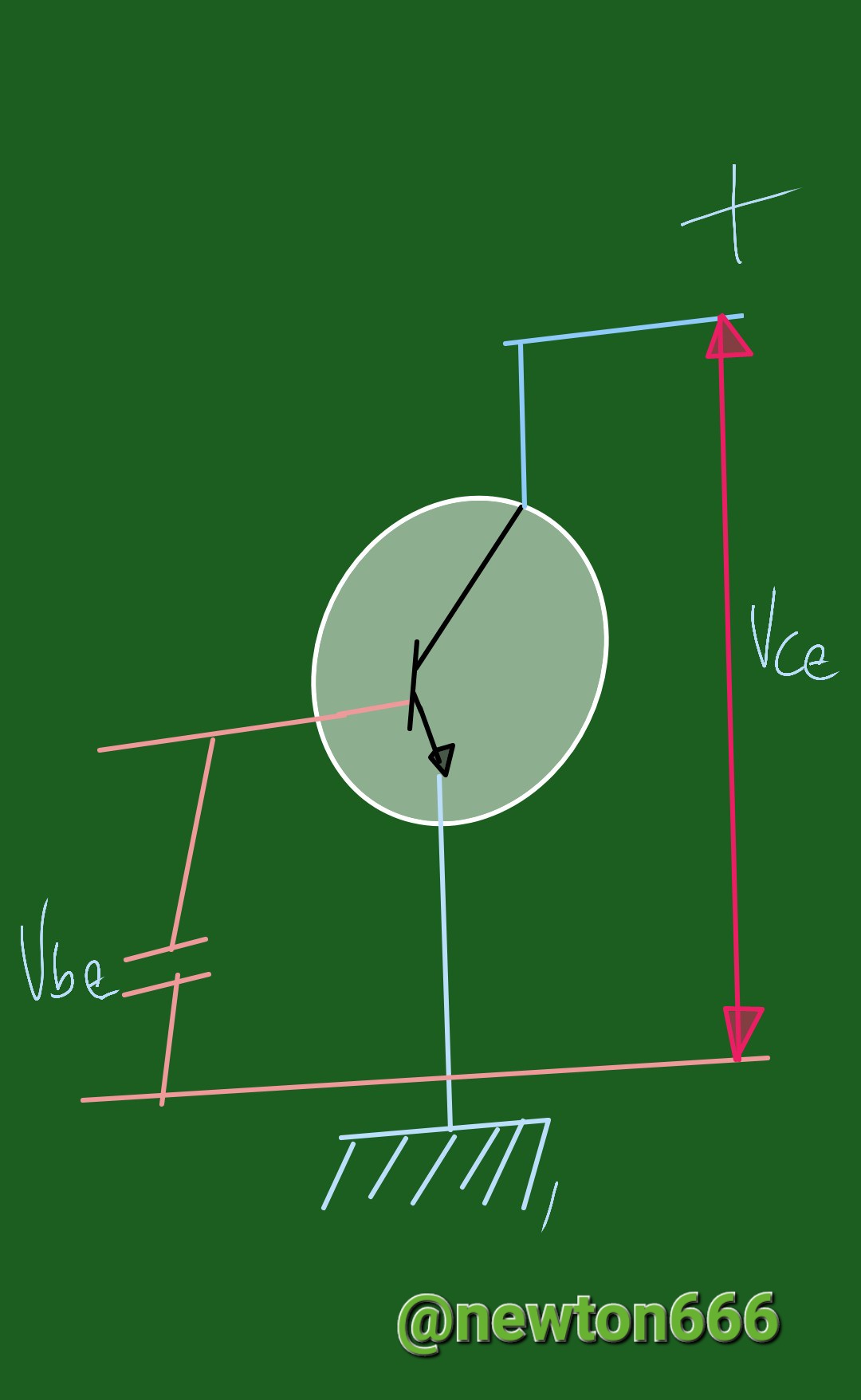Voltage and current in the transistor of a circuit
.jpg)
We have the following representation where my reader friends, we have the polarization in a circuit, which a transistor performs the function of passing current to a collector collector, by means of a positive charge power, also connected to a battery at the base of the circuit, the singularity of all this is reinforced by resistance, where the force of the potential is reflected in the collector and the emitter.
The movement of electrons via a transistor is referred to as current. Both the base and the collector carry current, which then travels to the emitter. The transistor's base current regulates the current that travels from the collector to the emitter. This is so that the transistor's resistance, which in turn regulates the transistor's current in the base, can alter.
The difference in electrical potential between the transistor's terminals is referred to as voltage. The current that travels from the collector to the emitter is determined by the voltage at the base. The transistor is said to be in active mode when the voltage at the base is greater than the voltage at the emitter. The transistor functions as a switch in this mode, allowing a sizable current to travel from the collector to the emitter. The transistor is said to be in cutoff mode when the voltage at the base is lower than the voltage at the emitter.
When operating in this state, the transistor behaves like an open switch and prevents current from the collector from flowing.
The current gain equation, which illustrates the relationship between the current running through the collector and the current flowing through the base, is an illustration of an equation relevant to transistor operation.
The transistor's collector current (IC) to base current (IB) ratio is known as the current gain (hFE):
hFE = IC / IB
The voltage divider rule, which is used to determine the voltage at the transistor's base in a circuit, is another significant equation associated with transistor operation. According to the voltage divider rule, the voltage at the base (VB) equals the product of the circuit's overall voltage (VT) and the ratio of the resistance between the base and emitter (RB) to the circuit's overall resistance (RT)
VB = VT * (RB / RT)
For example, consider a circuit with a total voltage of 12 volts, a total resistance of 1000 ohms, and a base-emitter resistance of 100 ohms. Using the voltage divider rule, we can calculate the voltage at the base of the transistor as:
VB = 12 * (100 / 1000) = 1.2 volts
Depending on the voltage at the emitter and the properties of the transistor, this voltage can then be used to identify whether the transistor is operating in active mode or cutoff mode.
Photo edited by my Samsung A23 phone
Bibliography Reference
Electronics Practices by Paul B. Zbar, Albert Paul Malvino, Michael A. Miller, 2003.
Physics for science and technology. II by Paul Allen Tipler, Gene Mosca, 2004.

Posted with STEMGeeks
Thanks for your contribution to the STEMsocial community. Feel free to join us on discord to get to know the rest of us!
Please consider delegating to the @stemsocial account (85% of the curation rewards are returned).
You may also include @stemsocial as a beneficiary of the rewards of this post to get a stronger support.
Understanding the relationship between voltage and current in the transistor of a circuit is essential for electronic engineers and enthusiasts alike. Transistors, the fundamental building blocks of electronic devices, regulate the flow of electrical current within a circuit by amplifying or switching signals. By controlling the voltage applied to the transistor, engineers can manipulate the current passing through it, enabling precise control over various functions in electronic devices. This intricate interplay between voltage and current is akin to the intricate logistics involved in managing a bustling transport mia airport. Just as the airport regulates the flow of passengers and cargo to ensure smooth travel, engineers must meticulously balance voltage and current to ensure the optimal functioning of electronic circuits, allowing for seamless transmission of data and efficient operation of devices.